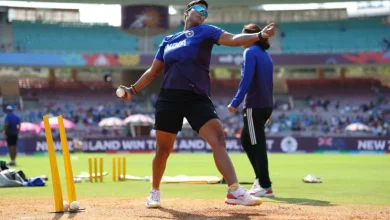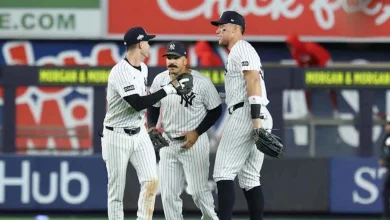Starlyn Caba: Comprehensive Scouting and Projection Report

Brady Roselle is a senior at Coastal Carolina University majoring in sports media and communications. The original version of this analysis can be found here.
Introduction
Few players in the Miami Marlins organization have generated as much intrigue as Starlyn Caba, a 19-year-old switch-hitting shortstop from the Dominican Republic who currently ranks as the club’s No. 5 overall prospect. Since signing for $2.8 million in 2023, Caba has quickly developed a reputation as one of the most instinctive and fundamentally advanced infielders in the lower minors. Being the centerpiece of the Jesús Luzardo acquisition by the Philadelphia Phillies at the end of the offseason last year, Caba was highly touted and thought of as the shortstop of the future for the Miami Marlins by many executives around Major League Baseball.
This report blends traditional scouting observations with quantitative performance indicators and player development context to provide a holistic evaluation of Caba’s present value and long-term trajectory. The assessment reflects the analytical approach typically used in professional player development departments, integrating measurable outcomes with subjective scouting inputs to frame Caba’s realistic ceiling and floor within an MLB context.
Physical Profile and Athletic Makeup
At 5-foot-10 and approximately 165 pounds, Caba exhibits a lean, athletic frame with room to add 10–15 pounds of functional strength without sacrificing quick-twitch movement. His athleticism plays through his lower half, compact, explosive actions, light feet, and tremendous body control in lateral transitions. While not a raw burner, Caba’s run tool grades as a 60 due to excellent first-step quickness and efficient route running on the bases.
Caba’s movements are precise and rhythmic, which translates defensively to smooth exchanges and outstanding coordination between his hands and feet. His field actions are polished well beyond his years, suggesting natural instinct reinforced by strong repetition habits and defensive IQ.
Scouting Breakdown
Tool
Grade (20–80)
Hit
55
Power
45
Run
60
Field
75
Arm
55
Caba’s field tool (75) anchors his profile. His internal clock is elite, he rarely rushes plays yet consistently beats the runner to the bag. The arm grades as above-average (55), with strong accuracy and carry that play comfortably from deep in the hole. The run tool (60) shows up both defensively and on the basepaths, where he demonstrates advanced reads and an ability to pressure defenses.
Offensively, Caba’s hit tool is his best present offensive asset. He controls the zone well, especially for his age, showing a mature understanding of sequencing and pitch recognition. His swing is compact from both sides, though slightly more fluid and line-drive oriented from the left. There’s minimal chase and a solid two-strike approach. The power tool (45) is presently below average, but there’s physical and mechanical projection as his core and lower half mature. With strength gains and improved barrel efficiency, Caba could eventually reach fringe-average game power, roughly 10–15 home runs annually.
Performance and Statistical Context
Caba’s performance metrics in the Florida Complex League (2024) and Low-A Jupiter (2025) provide a small but revealing sample of his offensive identity.
Season
AVG
OBP
SLG
OPS
HR
SB
Notes
2024 (FCL)
.254
.427
.335
.762
2
37
Led FCL in walks (51), runs (44), and steals (37).
2025 (Jupiter)
.222
.335
.278
.613
1
14
Missed time with thumb sprain; assigned to Arizona Fall League.
MiLB Career
.242
.378
.296
.674
3
80
Cumulative line through 2025; maintains strong OBP trend.
The underlying numbers emphasize a disciplined on-base approach rather than impact contact. His .378 career OBP underscores the maturity of his swing decisions, while his 80 career steals show both confidence and high-level baserunning acumen. Caba doesn’t chase and rarely expands the zone, which aligns with a contact-first, gap-to-gap offensive profile.
Defensively, evaluators within the Marlins organization have cited his first-step anticipation and soft hands as “Major League-ready.” His internal tempo and ability to complete plays on the move already resemble that of established big-league defenders.
Analytical Projection Modeling
Using a probabilistic projection framework common in professional scouting departments, Caba’s developmental trajectory can be summarized in three outcome scenarios:
Scenario
Projected WAR
Projected OPS
Description
Optimistic (15%)
4.0
.760
All-Star ceiling; two-way impact shortstop with plus OBP and elite glove.
Baseline (55%)
2.5
.690
Everyday regular with top-tier defense and moderate offensive output.
Downside (30%)
0.8
.600
Utility infielder; defense carries value despite limited power.
Weighted outcomes across these scenarios yield a projected 2.2 WAR and .673 OPS, indicating a solid everyday regular profile. Even in his downside case, Caba’s glove and baserunning combination provide enough run prevention and situational value to justify a big-league roster spot.
The radar visualization of his scouting grades shows a clear skew toward the defensive and athletic spectrum, with hit and field tools far outpacing raw power. The WAR/OPS model further reinforces that incremental gains in power or extra-base production could yield significant value amplification, especially in a contact-oriented offensive environment.
Evaluator Perspective and Development Path
Having spent the previous four years working in player development and scouting settings, I view Caba as a high-floor, high-ceiling prospect whose defensive reliability gives him a real path to Major League service time regardless of offensive growth. His actions, instincts, and body language all exude confidence and baseball acumen.
Caba’s offensive progression will depend largely on strength development and mechanical efficiency. Adding 10–15 pounds of good weight could help him drive the baseball with more authority without compromising agility. He’s begun using his lower half more effectively, increasing bat speed and hip rotation, adjustments that have translated into more consistent hard-hit contact in recent instructional league games.
Comparatively, his projection resembles a hybrid of early-career Francisco Lindor and J.P. Crawford, glove-first shortstops who grew into league-average or better offensive contributors through steady mechanical refinement. If Caba reaches even 80% of Lindor’s physical maturation and contact quality, he profiles as a perennial 2.5–3.5 WAR player.
Long-Term Perspective and Organizational Value
From an organizational standpoint, Caba fits the Marlins’ developmental mold: a high-character, defense-centric prospect who complements the franchise’s pitching-heavy infrastructure. He projects to debut around 2027, aligning with the maturation of Miami’s young rotation core.
Given his defensive reliability and on-base profile, Caba represents a potential stabilizing force at a premium position. The defensive foundation alone ensures major league viability; any offensive leap, even marginal, elevates him to above-average regular territory.
Conclusion
Starlyn Caba embodies the traits that separate true shortstop prospects from athletes simply filling the position, advanced instincts, exceptional footwork, and a defensive motor that never idles. His glove will carry him to the big leagues; his bat will determine how long he stays there.
The data-driven projection suggests an expected WAR of 2.2 and OPS around .670, consistent with an everyday regular capable of providing consistent defensive value and competitive at-bats. If his physical maturation continues and the swing efficiency gains hold, he could exceed that baseline and emerge as one of the premier defensive infielders in the National League by his mid-20s.
Interested in learning more about the Miami Marlins’ top prospects? Check out our comprehensive top prospects list that includes up-to-date stats, articles and videos about every prospect, scouting reports, and more!
View Marlins Top Prospects





